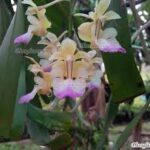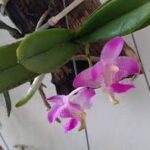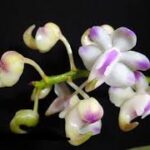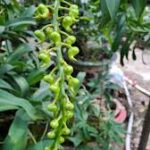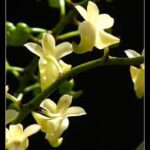
Sato Cymbidium orchids, known for their breathtaking beauty and elegance, have long been appreciated not just for their ornamental value but also for their significant roles in traditional medicine. In many cultures, these orchids symbolize purity and longevity and are believed to possess various therapeutic properties. This article explores the multifaceted applications of Sato Cymbidium orchids in traditional medicine, examining their historical significance, medicinal benefits, and the scientific backing behind their use.
## 1. Historical Context of Sato Cymbidium Orchids in Traditional Medicine
### 1.1 Ancient Practices and Cultural Significance
The use of orchids in traditional medicine dates back thousands of years, particularly in Asian cultures. In China, orchids were highly regarded in ancient texts, with Sato Cymbidium being one of the most cherished varieties. Traditional Chinese Medicine (TCM) practitioners believed that orchids could promote health and longevity. They were often associated with nourishing the yin, improving vitality, and promoting harmony in the body.
Similarly, in Vietnam, Sato Cymbidium orchids have been used in folk medicine for generations. They are revered for their potential health benefits and are commonly incorporated into various remedies to address a range of ailments.
### 1.2 Ethnobotanical Studies
Ethnobotanical studies have documented the traditional uses of Sato Cymbidium orchids across different cultures. These studies highlight how indigenous knowledge has informed the use of orchids in healing practices. For instance, in some cultures, the flowers and leaves of Sato Cymbidium are used in herbal preparations to alleviate various health issues.
## 2. Medicinal Properties of Sato Cymbidium Orchids
### 2.1 Phytochemical Composition
Sato Cymbidium orchids contain a variety of bioactive compounds that contribute to their medicinal properties. Phytochemicals such as flavonoids, alkaloids, and polysaccharides have been identified in these orchids, each playing a role in their therapeutic potential.
– **Flavonoids**: These compounds are known for their antioxidant properties, which help combat oxidative stress in the body. They also exhibit anti-inflammatory effects, making them beneficial for conditions characterized by inflammation.
– **Alkaloids**: Some alkaloids found in orchids have been studied for their analgesic (pain-relieving) and sedative properties, providing a natural approach to pain management.
– **Polysaccharides**: These complex carbohydrates have immunomodulatory effects, enhancing the body’s immune response and potentially offering protection against infections.
### 2.2 Traditional Uses in Herbal Remedies
The traditional applications of Sato Cymbidium orchids in herbal medicine are diverse and rich in history. Some notable uses include:
– **Respiratory Health**: In traditional practices, Sato Cymbidium orchids have been used to treat respiratory conditions such as coughs, colds, and bronchitis. Herbal teas and infusions made from the leaves or flowers are believed to soothe the throat and alleviate symptoms.
– **Digestive Aid**: Extracts from Sato Cymbidium orchids are sometimes included in herbal formulations to promote digestion and relieve gastrointestinal discomfort. They are thought to have mild laxative effects, aiding in regular bowel movements.
– **Skin Health**: Topical applications of Sato Cymbidium orchid extracts have been traditionally used to address skin conditions, including rashes and irritations. The anti-inflammatory properties of the orchids help soothe the skin and promote healing.
– **Stress Relief**: The calming effects of Sato Cymbidium orchids have made them popular in herbal teas and aromatherapy. They are believed to reduce stress and anxiety, promoting relaxation and emotional well-being.
### 2.3 Enhancing Overall Well-Being
The holistic approach of traditional medicine emphasizes balance and harmony within the body. Sato Cymbidium orchids are believed to contribute to overall well-being by promoting vital energy (Qi) flow and nourishing the body. Their use in herbal formulas aims to restore equilibrium and enhance vitality.
## 3. Modern Research on Sato Cymbidium Orchids
### 3.1 Scientific Validation of Traditional Uses
Recent scientific studies have begun to validate some of the traditional uses of Sato Cymbidium orchids. Researchers have isolated and analyzed the bioactive compounds present in these orchids, leading to a deeper understanding of their medicinal properties.
– **Antioxidant Activity**: Studies have demonstrated that extracts from Sato Cymbidium orchids exhibit significant antioxidant activity, confirming their potential in combating oxidative stress.
– **Anti-Inflammatory Effects**: Research has shown that certain compounds extracted from the orchids can inhibit inflammatory pathways, providing a scientific basis for their traditional use in alleviating inflammation-related conditions.
– **Immunomodulatory Properties**: Investigations into the immunomodulatory effects of Sato Cymbidium orchid extracts have revealed their ability to enhance immune responses, supporting their traditional use in promoting health.
### 3.2 Integrating Traditional Knowledge with Modern Medicine
The intersection of traditional medicine and modern scientific research presents opportunities for developing new therapies based on Sato Cymbidium orchids. By integrating traditional knowledge with scientific validation, researchers can explore the potential for novel herbal formulations and treatments.
For instance, clinical trials could be conducted to assess the effectiveness of Sato Cymbidium orchid extracts in treating specific health conditions, paving the way for their incorporation into contemporary medical practices.
## 4. Preparation and Usage of Sato Cymbidium Orchids in Traditional Medicine
### 4.1 Herbal Infusions and Teas
One of the most common methods of utilizing Sato Cymbidium orchids in traditional medicine is through herbal infusions and teas.
– **Preparation**: To prepare a tea, fresh or dried flowers and leaves are steeped in hot water for several minutes. This extraction process allows the beneficial compounds to infuse into the water, creating a therapeutic beverage.
– **Dosage**: It is advisable to consume herbal teas made from Sato Cymbidium orchids in moderation, with typical servings ranging from one to two cups per day, depending on individual needs and tolerance.
### 4.2 Topical Applications
For skin conditions, Sato Cymbidium orchid extracts can be used topically.
– **Preparation of Extracts**: A simple extract can be made by steeping the flowers in a carrier oil, such as coconut or olive oil. This infusion can then be applied to the affected areas to promote healing and soothe irritation.
– **Homemade Remedies**: Some traditional recipes involve mixing Sato Cymbidium orchid extracts with other herbal ingredients known for their skin-soothing properties, enhancing their effectiveness.
### 4.3 Culinary Uses
In some cultures, Sato Cymbidium orchids are used in culinary applications, adding flavor and beauty to dishes. They can be used as edible garnishes or incorporated into salads and desserts, providing both aesthetic appeal and potential health benefits.
## 5. Safety Considerations and Precautions
### 5.1 Potential Allergies and Sensitivities
While Sato Cymbidium orchids are generally considered safe for most individuals, it is important to be aware of potential allergies or sensitivities. Some people may experience allergic reactions to certain plant compounds, so it is advisable to perform a patch test before using any topical preparations.
### 5.2 Consultation with Healthcare Professionals
Before incorporating Sato Cymbidium orchids into your wellness routine, especially for therapeutic purposes, it is recommended to consult with healthcare professionals, particularly if you have existing health conditions or are taking medications. This ensures safe and informed usage.
## 6. Conclusion
Sato Cymbidium orchids hold a revered place in traditional medicine, offering a wealth of therapeutic applications grounded in cultural history and scientific exploration. Their rich phytochemical composition contributes to their antioxidant, anti-inflammatory, and immunomodulatory properties, validating many traditional uses.
As interest in natural remedies and holistic approaches to health continues to grow, Sato Cymbidium orchids present a promising avenue for further research and exploration. By bridging traditional knowledge with modern science, we can unlock the full potential of these stunning orchids, enhancing our understanding of their medicinal benefits and promoting their sustainable use in herbal medicine.
# The Applications of Sato Cymbidium Orchids in Traditional Medicine (Part 2)
In the previous section, we explored the historical context, medicinal properties, and modern research surrounding Sato Cymbidium orchids in traditional medicine. In this part, we will delve deeper into specific applications, preparation methods, case studies, and the future potential of these remarkable orchids in the realm of holistic healing.
## 1. Specific Applications of Sato Cymbidium Orchids in Traditional Medicine
### 1.1 Respiratory Health
Sato Cymbidium orchids have a long-standing reputation for their beneficial effects on respiratory health. Traditional herbal formulations often utilize the flowers and leaves of these orchids to alleviate symptoms associated with respiratory ailments.
#### **Preparation of Herbal Remedies for Respiratory Issues**
– **Orchid Tea for Cough Relief**:
– **Ingredients**: Fresh or dried Sato Cymbidium orchid flowers and leaves, honey, and water.
– **Method**: Boil water and steep a handful of the orchid flowers and leaves for about 10–15 minutes. Strain the mixture and add honey to taste. This tea can be consumed twice daily to help soothe coughs and improve respiratory function.
– **Steam Inhalation**:
– **Preparation**: Boil Sato Cymbidium orchid leaves in water to create steam. Inhaling this steam can help clear nasal passages and relieve congestion. This method is particularly useful during cold and flu seasons.
### 1.2 Digestive Health
In traditional medicine, Sato Cymbidium orchids are recognized for their potential benefits in promoting digestive health. They are believed to aid digestion and alleviate gastrointestinal discomfort.
#### **Herbal Formulations for Digestive Ailments**
– **Digestive Infusion**:
– **Ingredients**: Dried Sato Cymbidium flowers, ginger, and warm water.
– **Method**: Combine the dried flowers and sliced ginger in a teapot. Pour warm water over the mixture and steep for about 10 minutes. This infusion can help stimulate digestion and relieve bloating.
– **Stomach Soothing Tincture**:
– **Ingredients**: Fresh Sato Cymbidium flowers, apple cider vinegar, and honey.
– **Method**: Fill a jar with fresh flowers and cover them with apple cider vinegar. Seal and let it sit for a few weeks. Strain the mixture and mix it with honey. Taking a tablespoon of this tincture before meals may promote digestive health.
### 1.3 Skin Health and Beauty Applications
Sato Cymbidium orchids are often incorporated into topical applications to improve skin health and address various dermatological conditions.
#### **Topical Remedies for Skin Care**
– **Orchid-Infused Oil**:
– **Ingredients**: Sato Cymbidium flowers, carrier oil (like jojoba or coconut oil).
– **Method**: Place flowers in a jar and cover them with the carrier oil. Let the mixture sit in a warm, sunny spot for several days, then strain. This oil can be used as a moisturizer or as a treatment for minor skin irritations.
– **Face Masks**:
– **Preparation**: Blend fresh Sato Cymbidium flowers with honey and yogurt to create a hydrating face mask. Apply it to the skin for 15-20 minutes before rinsing off to improve skin texture and appearance.
### 1.4 Stress Relief and Mental Health
Sato Cymbidium orchids are often used in traditional herbal medicine to alleviate stress and promote emotional well-being.
#### **Relaxation Techniques Involving Orchids**
– **Herbal Bath**:
– **Ingredients**: Sato Cymbidium flowers, Epsom salt, and warm water.
– **Method**: Add a handful of fresh or dried orchid flowers and Epsom salt to a warm bath. Soaking in this mixture can help relax muscles and soothe the mind, providing relief from stress and anxiety.
– **Aromatherapy**:
– **Essential Oil Blend**: Infuse carrier oil with Sato Cymbidium flowers and use it in diffusers or as a massage oil to promote relaxation and reduce anxiety.
### 1.5 Enhancing Immunity
Sato Cymbidium orchids are believed to have immunomodulatory properties that can enhance the body’s immune response. This application is particularly relevant in traditional medicine, where maintaining a strong immune system is paramount for overall health.
#### **Immune-Boosting Herbal Formulas**
– **Immune-Enhancing Tincture**:
– **Ingredients**: Dried Sato Cymbidium flowers, echinacea, and alcohol (vodka or brandy).
– **Method**: Combine the dried flowers and echinacea in a jar, covering them with alcohol. Let the mixture steep for several weeks before straining. A few drops of this tincture can be taken daily to boost the immune system.
– **Herbal Syrup**:
– **Preparation**: Create a syrup by boiling Sato Cymbidium flowers with honey and water. This syrup can be taken regularly to support immune function.
## 2. Case Studies and Real-Life Applications
### 2.1 Case Study: Traditional Practices in Vietnam
In Vietnam, Sato Cymbidium orchids are integral to traditional medicine. Many herbalists utilize these orchids in their practices to treat various ailments, particularly respiratory and digestive issues. Anecdotal evidence suggests that patients have reported improvements in their symptoms after incorporating Sato Cymbidium-infused remedies into their routines.
### 2.2 Integrative Approaches
As interest in holistic health grows, integrative approaches combining traditional medicine and modern healthcare are becoming increasingly popular. Practitioners are exploring the incorporation of Sato Cymbidium orchids into wellness programs, offering patients a natural alternative for managing stress, enhancing immunity, and improving overall health.
## 3. Future Potential of Sato Cymbidium Orchids in Medicine
### 3.1 Research Opportunities
As scientific interest in traditional medicine increases, Sato Cymbidium orchids present numerous research opportunities. Investigating their pharmacological properties and potential applications can pave the way for new therapeutic developments.
– **Pharmacological Studies**: Conducting rigorous pharmacological studies to identify the specific compounds responsible for the observed health benefits can contribute to a deeper understanding of their therapeutic potential.
– **Clinical Trials**: Setting up clinical trials to evaluate the effectiveness of Sato Cymbidium orchid extracts in treating specific conditions may provide substantial evidence for their use in modern medicine.
### 3.2 Sustainable Cultivation Practices
As demand for natural remedies grows, ensuring the sustainable cultivation of Sato Cymbidium orchids is crucial. Implementing sustainable agricultural practices can help preserve these valuable plants while meeting the rising demand for herbal products.
### 3.3 Bridging Tradition and Innovation
The future of Sato Cymbidium orchids in traditional medicine lies in bridging traditional knowledge with innovative research. By combining the wisdom of traditional healers with modern scientific methods, we can unlock the full potential of these orchids in therapeutic applications.
## 4. Conclusion
Sato Cymbidium orchids play a vital role in traditional medicine, offering a range of therapeutic applications rooted in centuries of cultural practices. From promoting respiratory health to enhancing immunity, these orchids have proven their value as natural remedies.
As scientific research continues to validate the traditional uses of Sato Cymbidium orchids, their potential in holistic healing becomes increasingly recognized. By embracing both traditional knowledge and modern science, we can ensure that these beautiful orchids not only continue to thrive in gardens but also enrich our health and well-being. The ongoing exploration of Sato Cymbidium orchids will undoubtedly lead to exciting discoveries, further solidifying their place in the realm of traditional medicine and holistic health practices.

